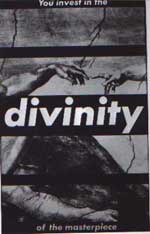 |
|
|
The Frick Museum in New York City is one of the world's great small collections. It was founded by Henry Clay Frick, a major steel and railroad tycoon of the late 19th and early 20th century. There is an excellent Web-site for the Frick. I want to explore the collection as a conscious construction of Frick himself. There is a separate page at the Frick site for the history of the collection.
To give our discussion more focus, I want to explore one room: the West Gallery. This is the focal point of the whole collection, and is one of the great rooms in any western museum. As you explore the Frick site, compare it to the different constructs of collections we explored off of the Institutional Frames page. If you take the time to download some special Ipix software you will be able to take a virtual tour of the gallery. Rather than see the collection as a group of separate works, see it as the creation of a specific collector at a specific historical moment. Try to do an ideological reading of Frick and his collection.
Notice how the Web site gives special emphasis to Rembrandt's Self Portrait of 1658 by giving an audio discussion of the work by the director. Listen to this presentation carefully. The voice of the director reflects traditional Art History. What is being given emphasis?
When you review the Frick, you might consider the implications of the following image by the contemporary artist, Barbara Kruger:
 |
|
|
The following is a schematic version of the West Gallery with some of the works deleted: